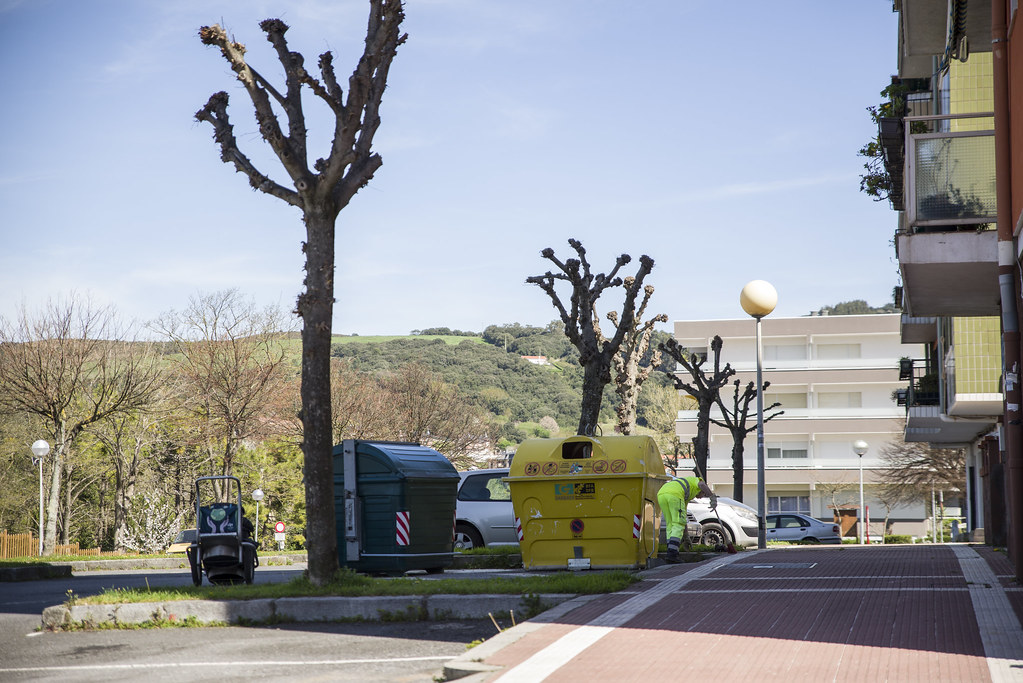Unemployment is much worse than you think; here you are right
- The problem for many Americans is not finding work, but sufficient hours and decent wages. Our global data conceals this reality.

We all know that there are millions of Americans out of work. But how much and where? To answer this, for many years we have taken into account the monthly unemployment rate of the Bureau of Labor Statistics (BLS). The unemployment rate in years has been a factor in understanding the health of the labour market, but also that of the whole economy so that politicians can measure it.
This indicates that, despite the pandemic, the situation at the moment is not so dark. In December, the unemployment rate stood at 6.7%. However, in recent years it has been recognised in some way that this rate does not reflect the total amount, as it only takes into account people who are actively seeking employment; desperate workers, who do not see what to look for, or who are completely surrendered, do not appear in that figure. And for decades the BLS has done an orderly job and has provided additional information about these workers, along with the overall unemployment rate.
But the point is that unemployed workers are not the only problem with the unemployment rate. In fact, these days the official unemployment rate is not only an incomplete number, but it is an alternative reality that hides the number of low- and middle-income workers. Consequently, politicians think that the situation of these Americans is much better than the real one.
There are two more problems in this way of counting the unemployed.
Firstly, the number of hours worked by part-time workers is not taken into account. According to the traditional definition of the BLS, the plumber or private nurse who works one afternoon a week is counted as “occupied” in the unemployment rate, although they would want to work more and do not find it. Our unemployment figures only mean that a person who works a few hours is considered “occupied”, as a full-time CEO. In practice this means that the unemployment rate expressly hides the number of workers living in poverty, not because they do not have jobs, but because they cannot spend hours.
Secondly, the data does not indicate whether a worker's salary is sufficient to get out of poverty. In other words, if we are working on unemployment data, the problems will be solved. However, the ever-increasing minimum wage movement indicates that many American workers are busy, even full-time, but on the contrary, they are poor.
We cannot, therefore, take advantage of the unemployment rate any longer in order to see the evolution of the economy. What is the point of an indicator if it places at the same level someone who has a family in a situation of poverty for having so little employment and who is among the richest by 1%?
Functional unemployment
To clarify the accounts, the problem in itself does not lie in the data; the data collected by the federal BLS remain the reference standard for analyzing the labor market. The problem is that to understand reality, politicians take into account the photograph offered by general official statistics. And the picture is very different if you consolidate the same data as the BLS, that is, less part-time workers who want a full day and workers who are paid below the poverty line (let's say, to be cautious, this is 20,000 dollars a year).
People who want a full-time job and find a part-time job and who have a full-time job but do not earn enough to get out of poverty should be considered as functional unemployed. I started doing this calculation and gave it the name of True Rate of ₡2 (TRU). And the TRU of December was not 6.7%, but 25.1% worrying.
The divergence between official unemployment data and functional unemployment is very high, but the situation was serious even before the start of the pandemic. According to official BLS data, in February 2020, the economy was supposedly “at all gas”, only 3.5% of Americans were out of work, while the TRU was 24%. It gives the impression that it does. So even when the economy was at the height of time before COVID-19, about a quarter of Americans were looking for full-time employment and a living wage. And at the worst time the nation has lived in almost a century, that number increased: 32.4 percent of workers didn't have what they needed.
But the thing is even more serious. I have also calculated the ratio of adults of working age and in a situation of functional unemployment to the total population, i.e. those who have stopped looking for work. 53.9% of Americans of working age in December do not have full-time employment with wages they give to live. And even more disappointing: 80% of those who do not have a high school degree are in this situation and 59.5% of those who only have a high school degree are in this situation.
Perhaps the most worrying thing is that, according to our study, the job opportunities of African-Americans in prosperous times are somewhat better, but then the return is tougher when the economy gets worse, making access to economic equality difficult. Today, the state of Black Americans is miserable: 30.2% of Americans are unemployed according to TRU data, while 22.7% of white Americans are unemployed.
The answer has failed
After all, for many Americans, and especially for minorities, for a long, long time, the American economy was not as good as the official data indicated. This may be news for the residents of comfortable neighborhoods and hulls, but the inhabitants of the suburbs of many cities will not be surprised (...).
The Washington Government has not given an adequate response, as the official unemployment rate has enabled the politicians of both parties, particularly in times of prosperity, to develop a discourse that says that our economic policy is sufficient to avoid suffering a crisis such as the present one.
We need an economic agenda that takes into account that the real picture of unemployment is much worse than politicians think. A quarter of the workers, including much of the minority communities, cannot find full-time employment for a living wage, even when the economy in general seems to be in shape. It matters from what point of view we see the economy. We have used the wrong measure to analyze our success.
It is time to look ahead to what the unemployment rate says, we cannot think that it is a good measure of the overall progress of the economy. As long as it does not start to see the economic landscape as it is, it is inconceivable that politicians will move towards another economic growth that will have a real impact on the lives of Americans in difficulty.
Datorren astelehenean egingo dute espedientearen kontsulta epeko bigarren bilera.
Copenhagen, 18 December 1974 At 12 noon a ferry arrived at the port, from where a group of about 100 Santa Claus landed. They brought a gigantic geese with them. The idea was to make a kind of “Trojan Goose” and, upon reaching the city, to pull the white beard costumes... [+]
Langabezia nehoiz baino apalago da Iparraldean, baina inflazioa beti traba izaten segitzen du ekonomian. 2023ko lehen sei hilabetetako tendentzien berri eman du Baionako Merkataritza eta Industria Ganberak. 210 enpresabururen sentipena bildu dute inkesta batean. Heren batek... [+]
In the year we have left behind, there were 150,000 unemployed in the peninsular Basque Country, of whom almost 80,000 were not receiving economic benefits. At the same time, 76% of CAPV companies point out that they have a great difficulty finding workers they need. It's one of... [+]
Some of the data used to analyse employment trends over the summer have been published. Data always showing photographs that are carried out according to the classifications established by the Capital. And they've taught us their regular photo. So, the old ones. However, and if... [+]






















